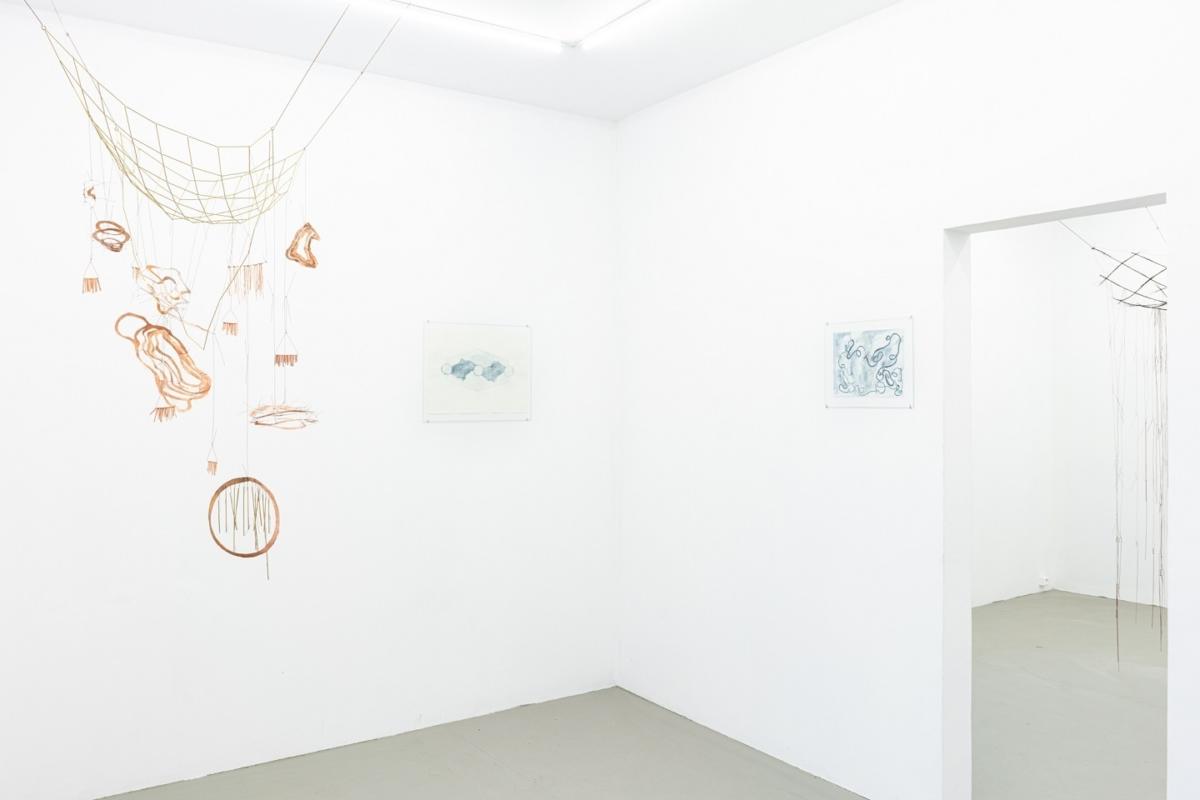
Iza Tarasewicz’s exhibition What Whispers Are These? borrows its title from a text by Walt Whitman where the American poet describes how modern technologies of communication are increasingly interlinking people across the world. Within these transmissions, Whitman suggests that a murmur of spontaneous energy is erupting from the masses and new networks are being mapped that include this restive noise.
Tarasewicz’s exhibition similarly considers the importance of noise and multiplicity in communication. Comprised of drawings and delicate sculptures, the exhibition emphasizes the role of models and modelling in the artist’s practice. The modest works have in the past often functioned in the background and as provisional studies for the artist’s larger sculptures and installations, for which Tarasewicz has garnered significant international attention. At Galeria Krynki, however, these humble figures of thought and charts of relation are given prominence as captivating and sensitive artworks in and of themselves.
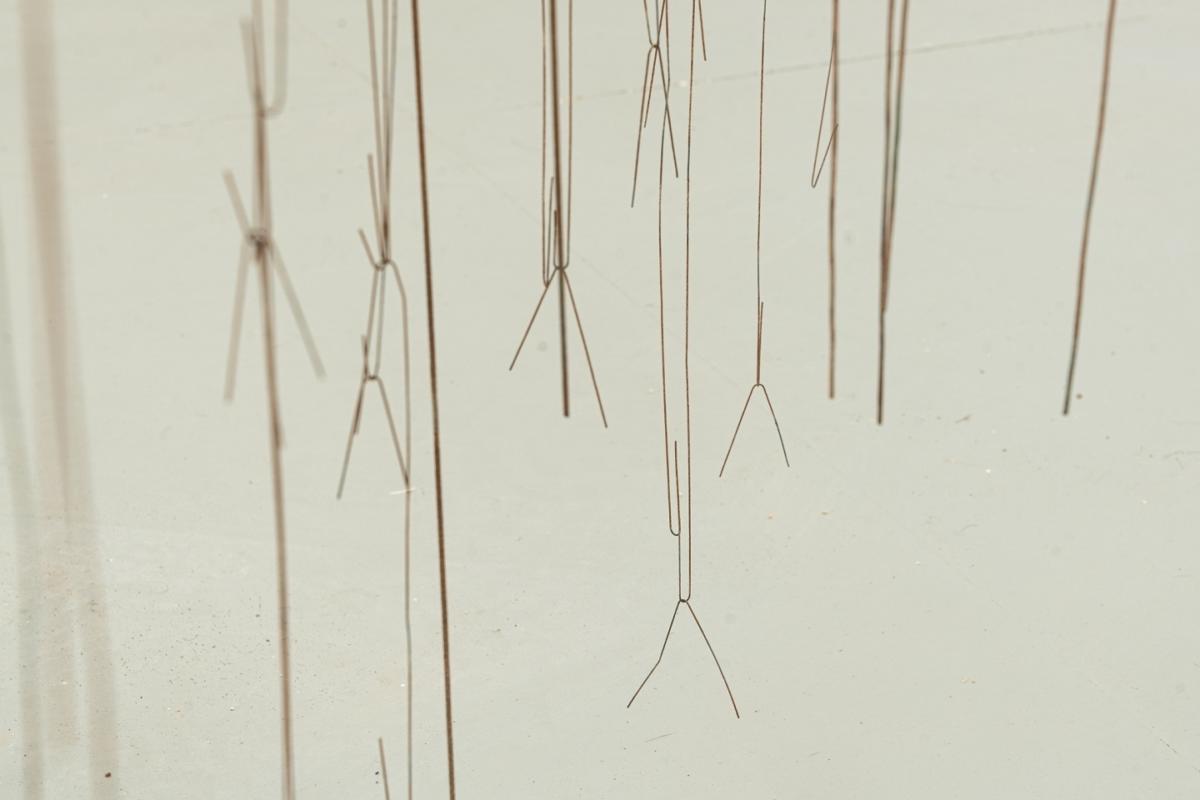
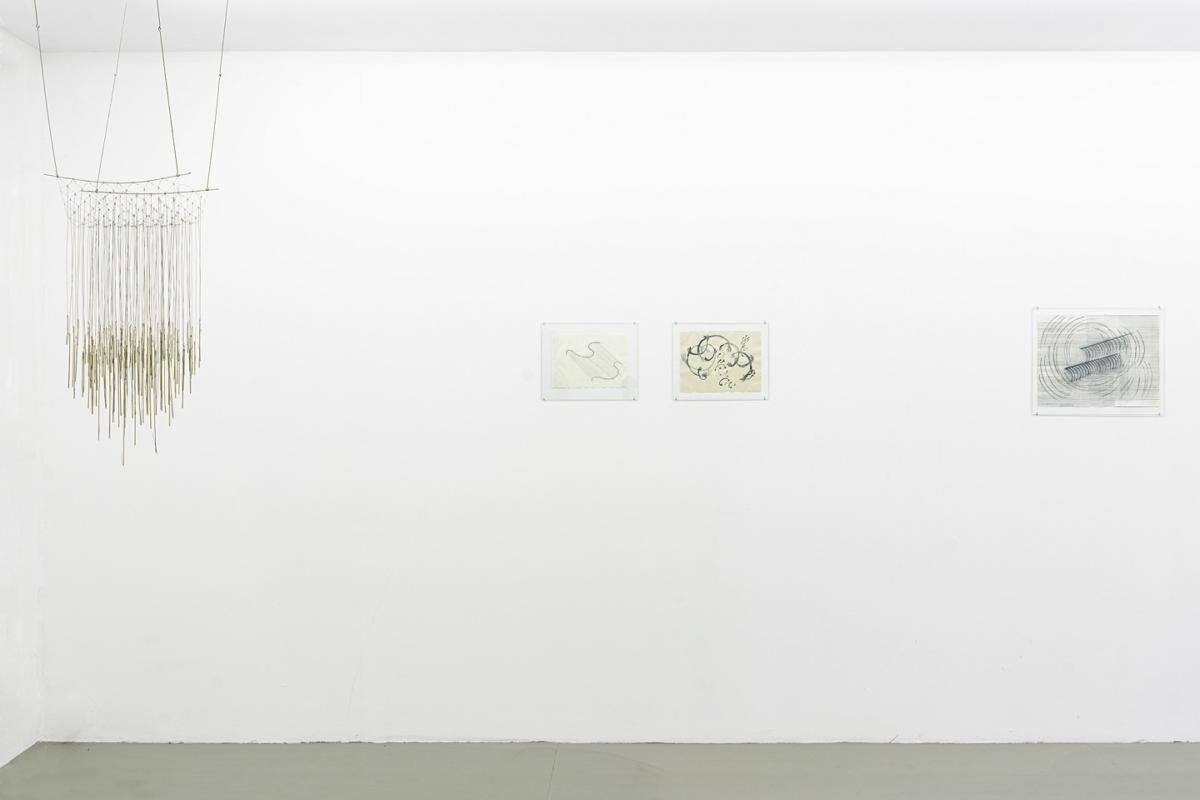


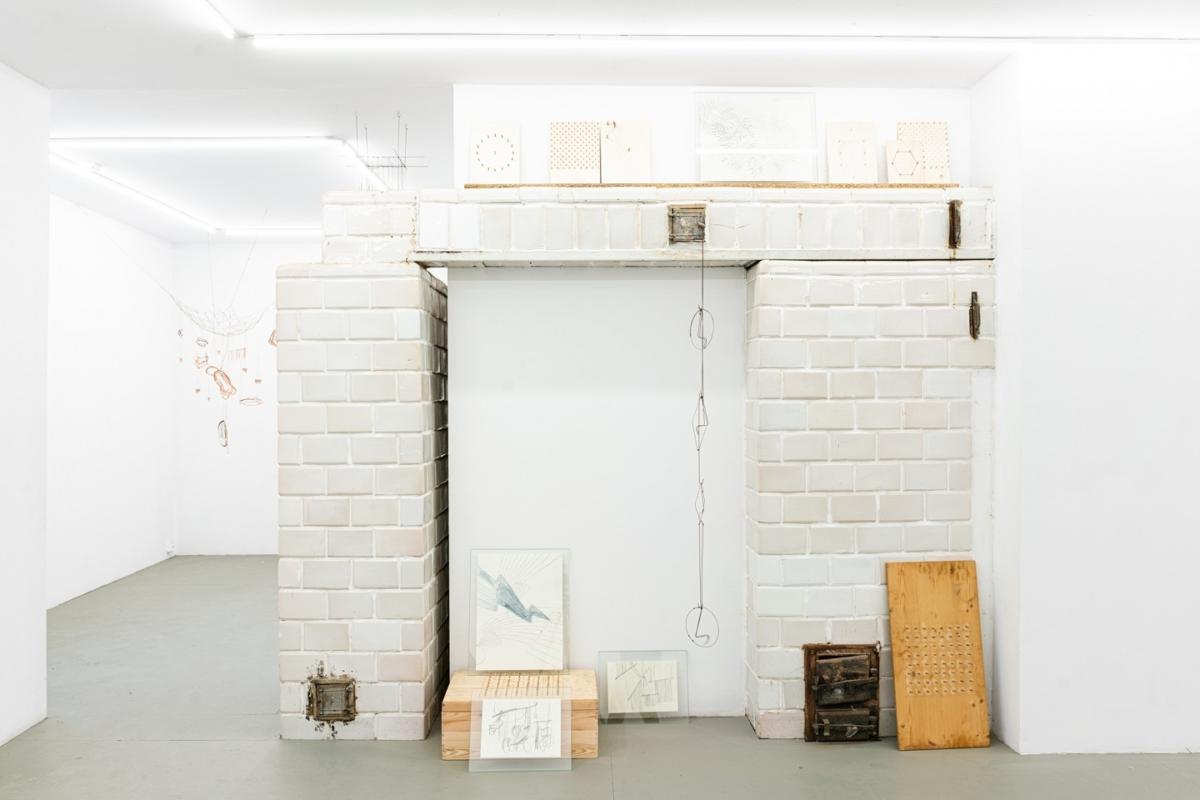
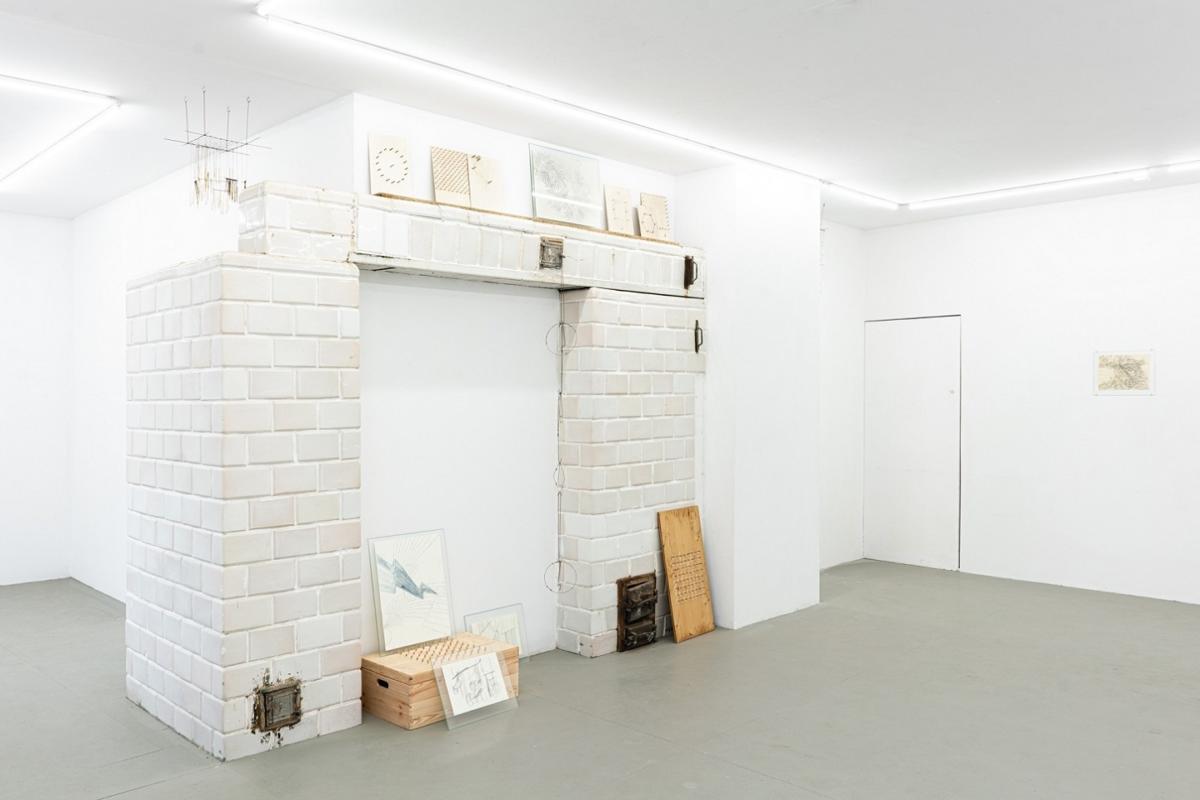
Spontaneous and improvised as if tracing out a thought process, the dense sketches presented map out the interaction of phenomena on the page, emphasizing material and textural affinities, repetitive movements, and the overlap of distinct systems. They are developed with no specific end result in mind and appear in progress and recall preparatory diagrams and scientific illustrations that move across scales and register effects. An accompanying set of hanging compositions are built of bent and knotted metal wire that form entangled nets or grids, bringing to mind jewelry, fishing nets, chain-links, and communication networks.
From this material and symbolic mesh, clusters of repeated fragile rods are hung to produce dense forests of lines whose organization and orderliness is contingent on the viewer’s shifting vantage point. At once architectural and almost invisible, the three-dimensional drawings chart relations within a matrix, invoking chaotic linkages and the deformation of seemingly rigid structures. Thus, both the drawings and models visualize a thicket of noise emerging from more ordered systems. Where communication is commonly regarded as a singular signal that appears out of a silent background, here Tarasewicz demonstrates noise as an element of multiplicity that is integral to information, a chorus of whispers in the background and within the message that is delicate but incessantly flickering.
Post Brothers

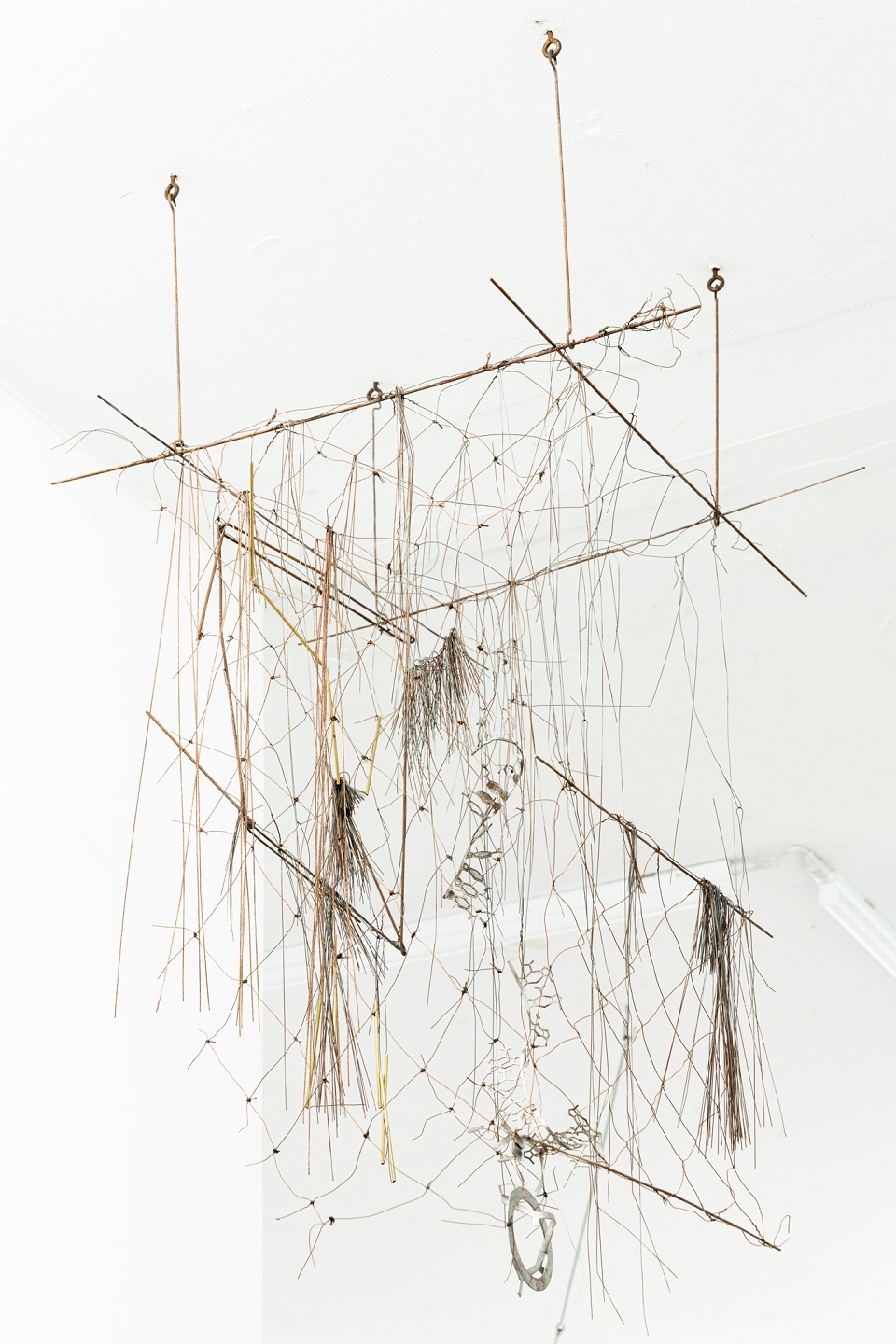
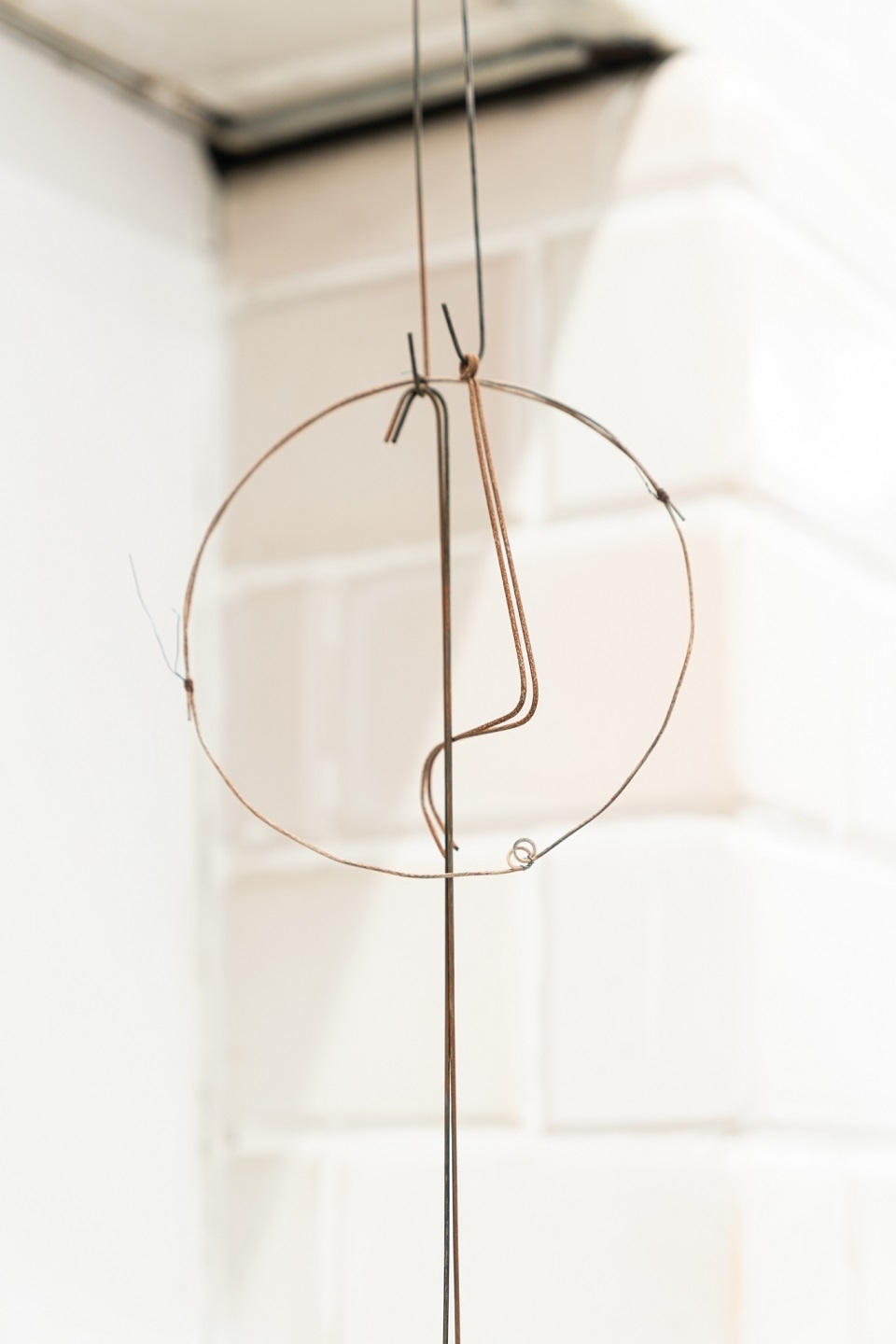
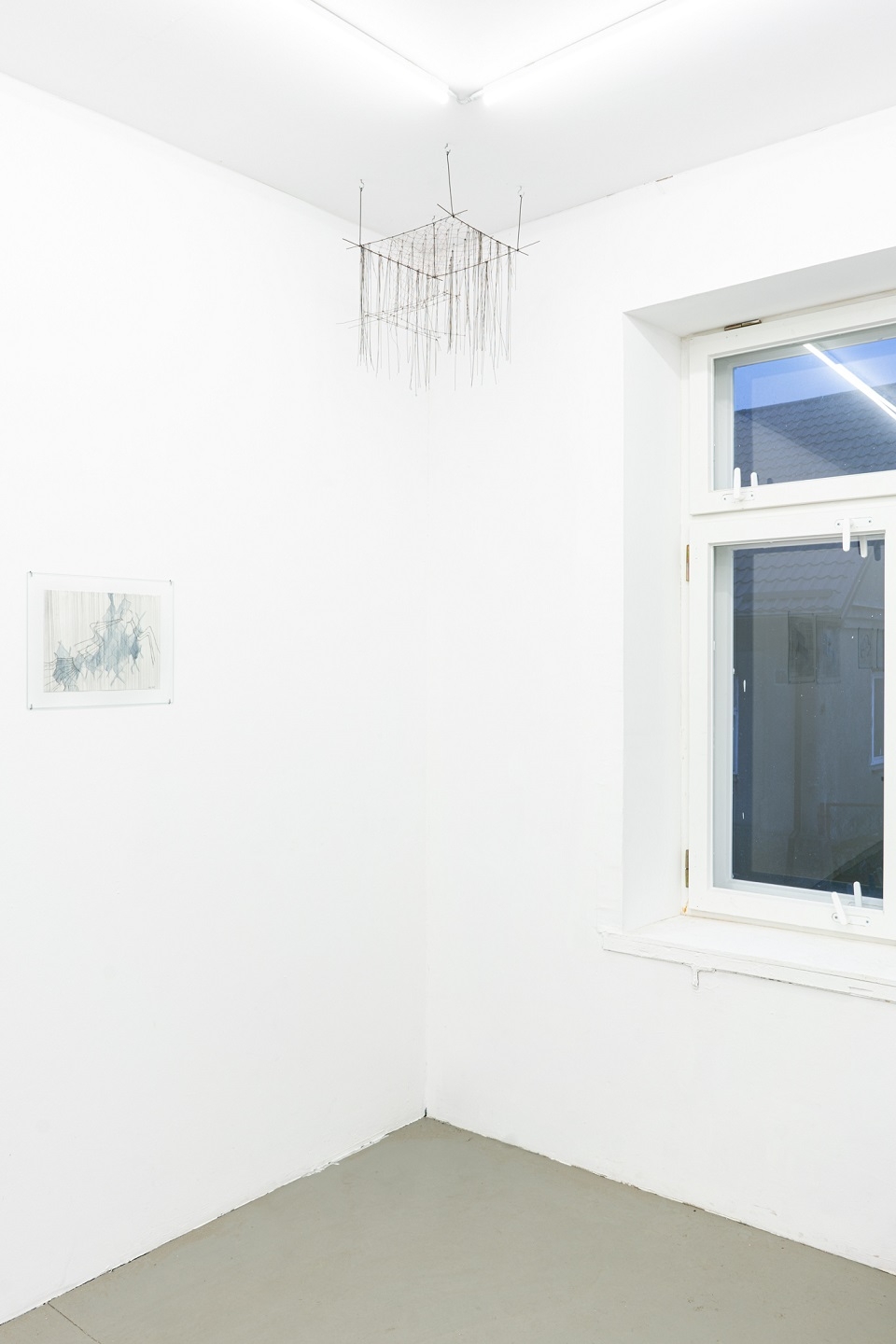


Walt Whitman
NOTEBOOKS AND UNPUBLISHED PROSE MANUSCRIPTS (fragment)
Landmarks of masters, slaves, kings, aristocracies, are moth-eaten, and the peoples of the earth are planting new vast landmarks for themselves. Frontiers and boundaries are less and less able to divide men. The modern inventions, the wholesale engines of war, the world-spreading instruments of peace, the steamship, the locomotive, the electric telegraph, the common newspaper, the cheap book, the ocean mail, are interlinking the inhabitants of the earth together as groups of one family-America standing, and for ages to stand, as the host and champion of the same, the most welcome spectacle ever presented among nations.
Every thing indicates unparalleled reforms. Races are marching and countermarching by swift millions and tens of millions. Never was justice so mighty amid injustice; never did the idea of equality erect itself so haughty and uncompromising amid inequality, as today. Never were such sharp questions asked as today. Never was there more eagerness to know. Never was the representative man more energetic, more like a god, than today. He urges on the myriads before him, he crowds them aside, his daring step approaches the arctic and the antarctic poles, he colonizes the shores of the Pacific, the Asiatic Indias, the birthplace of languages and of races, the archipelagoes, Australia; he explores Africa, he unearths Assyria and Egypt, he re-states history, he enlarges morality, he speculates anew upon the soul upon original premises; nothing is left quiet, nothing but he will settle by demonstrations for himself. What whispers are these running through the eastern continents, and crossing the Atlantic and Pacific? What historic denouements are these we are approaching? On all sides tyrants tremble, crowns are unsteady, the human race restive, on the watch for some better era, some divine war.
No man knows what will happen next, but all know that some such things are to happen as mark the greatest moral convulsions of the earth. Who shall play the hand for America in these tremendous games? A pretty time to put up two debauched old disunionist politicians, the lees and dregs of more than sixty years! A pretty time for two dead corpses to go walking up and down the earth, to guide by feebleness and ashes a proud, young, friendly, fresh, heroic nation of thirty millions of live and electric men!

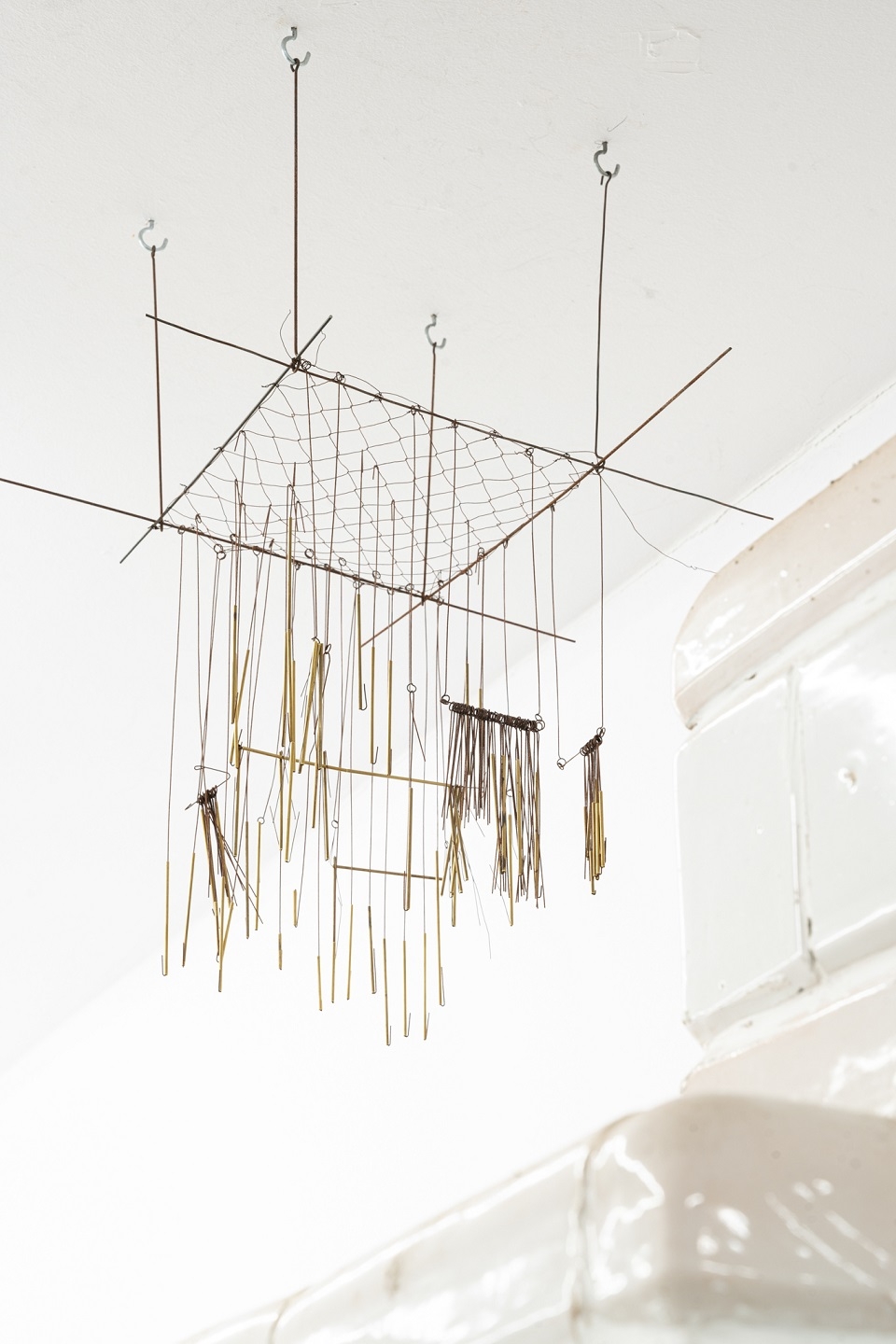
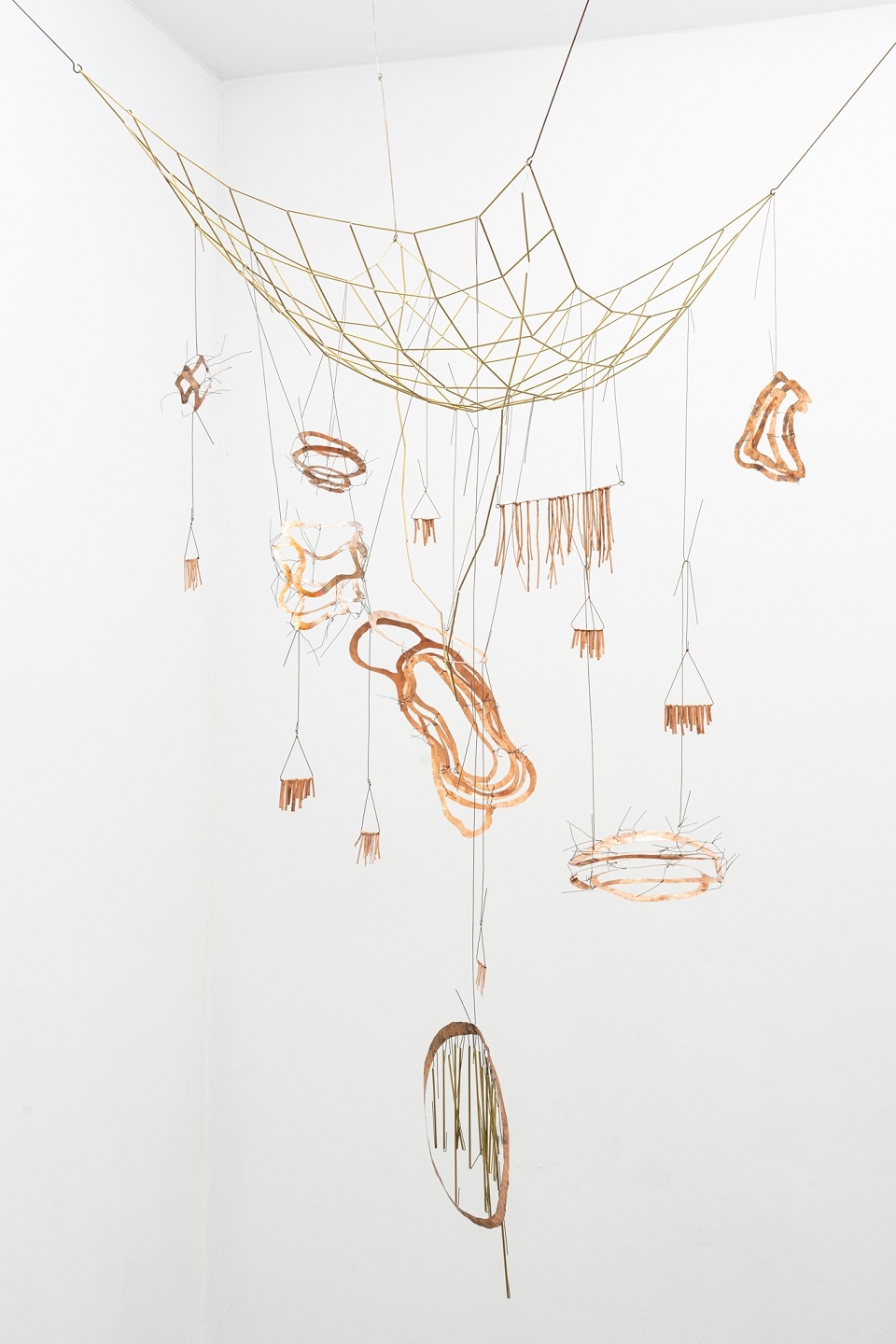
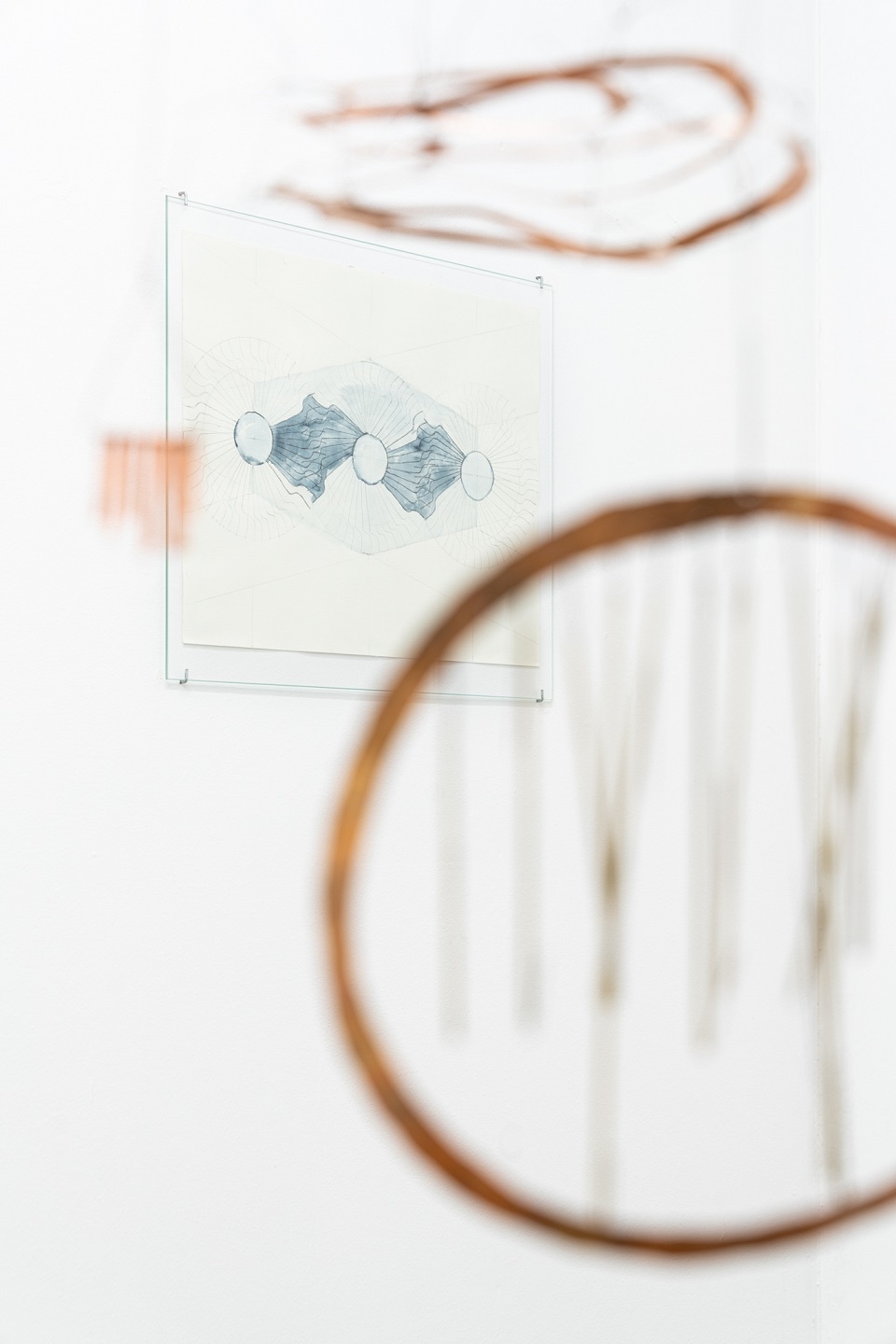
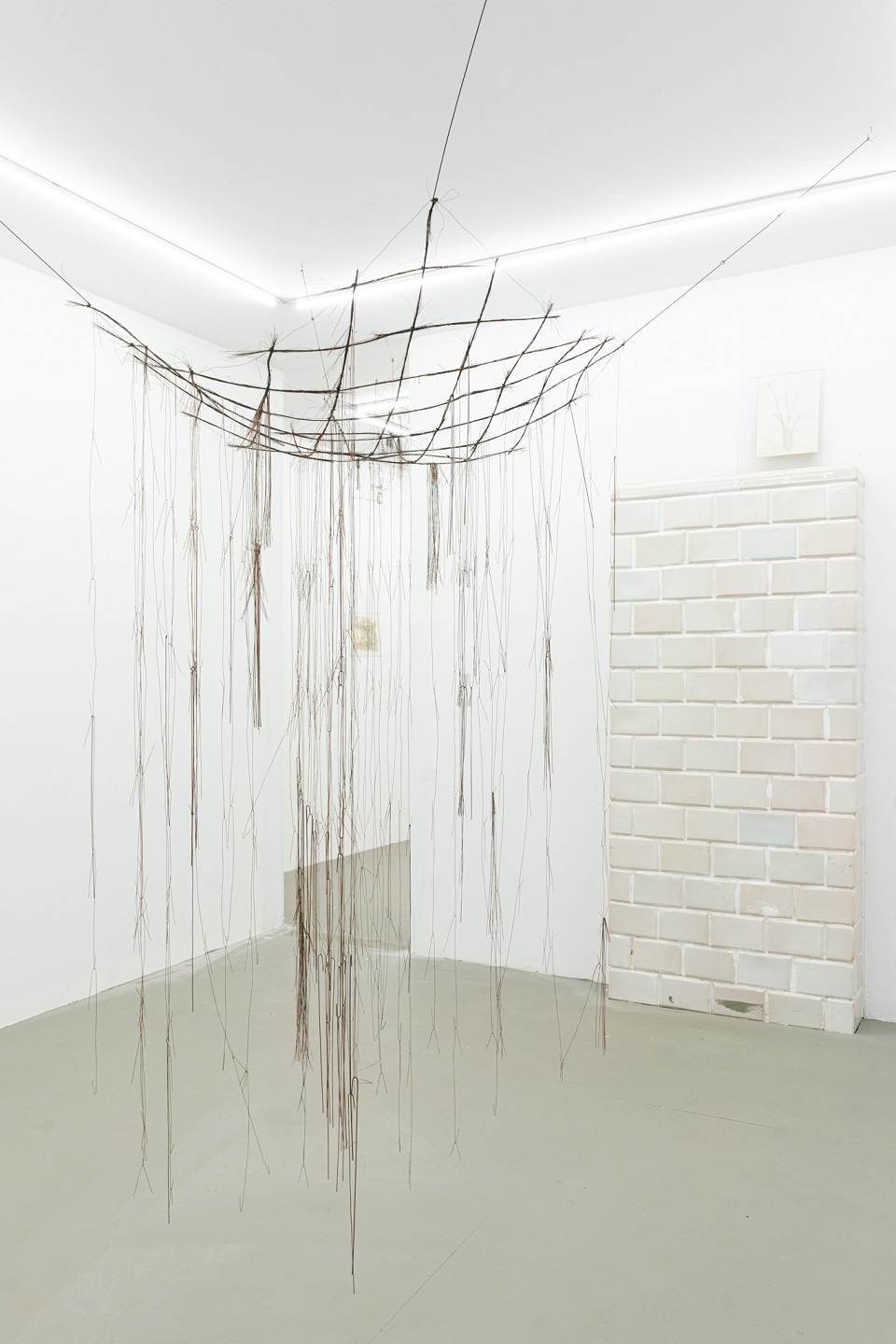
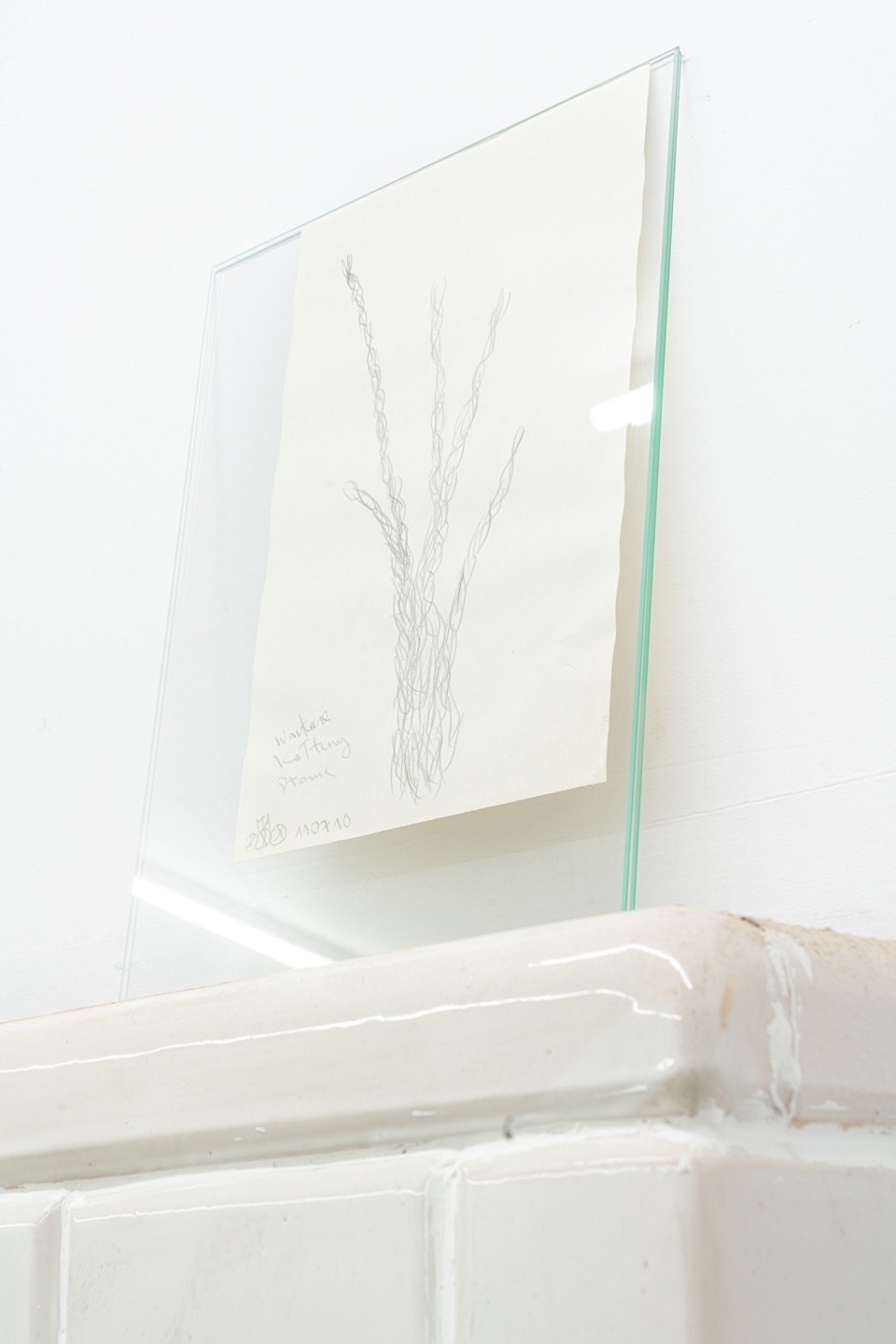
IZA TARASEWICZ
b. 1981, Białystok, Poland, Lives and works in Kolonia Koplany, Poland. On a winter day in an eastern Polish village, three-year-old Izabela Tarasewicz built a fire for her friends in the family barn. It burnt the entire shelter to the ground, melting her father’s motorcycle collection and scorching all of the food supplies for the season. Everyday as a child, Iza would observe her parents and grandparents build something from nothing and share it with their neighbours. It was deep communism politically, but also because of necessity. When Iza’s father died in her arms, she quit studying physiotherapy, and started thinking about abstraction. When Iza cut the umbilical cord of her niece, she closed a loop. After studying sculpture for a number of years, Iza’s teacher had a simple suggestion: use materials and processes that you know. She thought of her grandmother.
At the opening of an early exhibition, Iza climbed onto her large sculpture to demonstrate how stable she had built it. She fell on her ass, permanently injuring her lower vertebrae. And then she woke up. While at an artist residency in Georgia, the external bathroom building caught on fire. Unable to contain the flames, Iza’s host and friends took out their fishing poles and they all went fishing. When Iza visited San Francisco, a colleague gave her two options: meet with a curator who would show her fine dining, or meet up with another who would bring her to tranny bars and nightclubs. She chose the latter, and then married him. At an Umbanda session in Brazil, an Orixa instructed Iza to eat her mom. She did.
Tarasewicz graduated from the Faculty of Sculpture and Performing Arts at the Academy of Fine Arts in Poznan in 2008. Her work has been featured in numerous solo and group exhibitions internationally, most recently at Museum der bildenden Künste Leipzig, Germany (2019), Pori Art Museum, Finland (2019), Kunsthalle Darmstadt Germany (2019), Galerija Gregor Podnar, Berlin (2018), Contemporary Art Centre, Vilnius (2018), SKD Museum, Dresden (2018), Museum of Contemporary Art, Zagreb (2018) and KUMU Art Museum, Tallinn (2017), among others. In 2016 she participated in the 32nd Bienal de São Paulo and 11th Gwangju Biennale, she was presenting in the Polish Pavilion at the 16th Venice Architecture Biennale. In 2015, Tarasewicz was the winner of Bayerische Kunst Forderpreise 2019 and Views 2015 – Deutsche Bank Award co-organized with Zachęta – National Gallery of Art in Warsaw. She lives and works Kolonia Koplany, Poland.
Imprint
| Artist | Iza Tarasewicz |
| Exhibition | What Whispers Are These? |
| Place / venue | Galeria Krynki, ul. Józefa Piłsudskiego 6, 16-120 Krynki |
| Dates | 19 December – 31 December 2019 |
| Photos | Jan Szewczyk |
| Index | Galeria Krynki Iza Tarasewicz |
